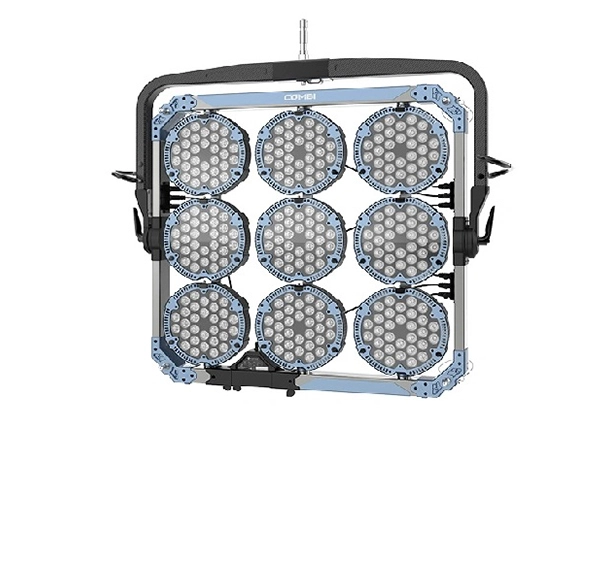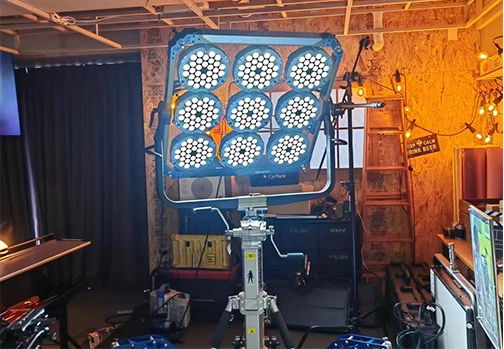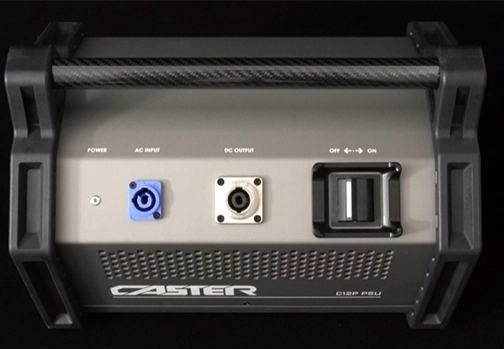Lights, camera, action! Film studio lighting is an essential aspect of cinematography that can elevate the visual appeal and storytelling of any movie. It is the art of manipulating light to create the desired mood, atmosphere, and composition for each shot. As a cinematographer or filmmaker, understanding the principles of film studio lighting can significantly enhance the quality of your work. In this blog, we will explore the importance of mastering the craft of film studio lighting and delve into four crucial aspects to consider.
The Power of Lighting in Film
Lighting plays a crucial role in enhancing the mood and storytelling of any film. It can evoke emotions, set the tone, highlight specific details, and guide the viewer's attention. Film studio lighting involves the use of artificial light sources such as spotlights, floodlights, and studio lamps to create a desired effect. Whether it's a tense and dramatic scene or a warm and romantic ambiance, the right lighting can bring the screenplay to life and immerse the audience in the story.
Types of Film Studio Lighting Techniques
There are various lighting techniques that filmmakers employ to achieve different effects and enhance the visuals of their films. Three common techniques include:
Three-Point Lighting: This technique is a fundamental approach in film studio lighting. It consists of three primary lights: the key light, fill light, and backlight. The key light is the primary source and establishes the main illumination for the scene, while the fill light softens the shadows created by the key light. The backlight adds depth and separates the subject from the background. Mastering this technique is essential for creating a natural and balanced look in your shots.
High Key Lighting: High key lighting is characterized by bright, even illumination that minimizes shadows. This technique is often used in comedy or upbeat scenes to create a cheerful and light-hearted atmosphere. It requires the use of multiple light sources to achieve the desired effect.
Low Key Lighting: In contrast to high key lighting, low key lighting creates a dramatic and mysterious ambiance by emphasizing shadows and contrast. It is often used in film noir or suspenseful genres to enhance tension and create a sense of unease. This technique typically involves reducing the number of lights and strategically placing them to create intense shadows and highlights.
Importance of Lighting Control
As a filmmaker, having control over the lighting in a film studio is crucial to achieving the desired results. The ability to manipulate the intensity, direction, color, and quality of light can transform a scene from ordinary to extraordinary. To exercise control, one must consider factors such as diffusion materials, gels, and reflectors to shape and modify the light. By understanding the science and art of light control, you can effectively create the desired visual impact and immerse your audience in the on-screen world.
Mastering Film Studio Lighting Techniques
Mastering film studio lighting involves studying the principles, experimenting with different lighting setups, and honing your creative instincts. It requires an understanding of the technical aspects of lighting equipment such as the wattage, color temperature, and beam angle. Additionally, learning from experienced cinematographers or attending workshops and courses can provide valuable insights and guidance on advanced lighting techniques.
In conclusion, film studio lighting is an art form that demands both technical skills and creative vision. By mastering the craft of film studio lighting, filmmakers can enhance the visual appeal and storytelling of their movies. Understanding the power of lighting, different lighting techniques, the importance of control, and continuously honing your skills will help you create captivating visuals that leave a lasting impact on your audience.
 English
English 日本語
日本語 한국어
한국어 Español
Español italiano
italiano العربية
العربية






